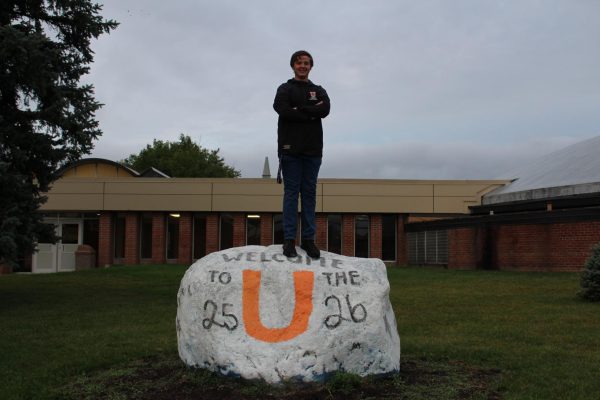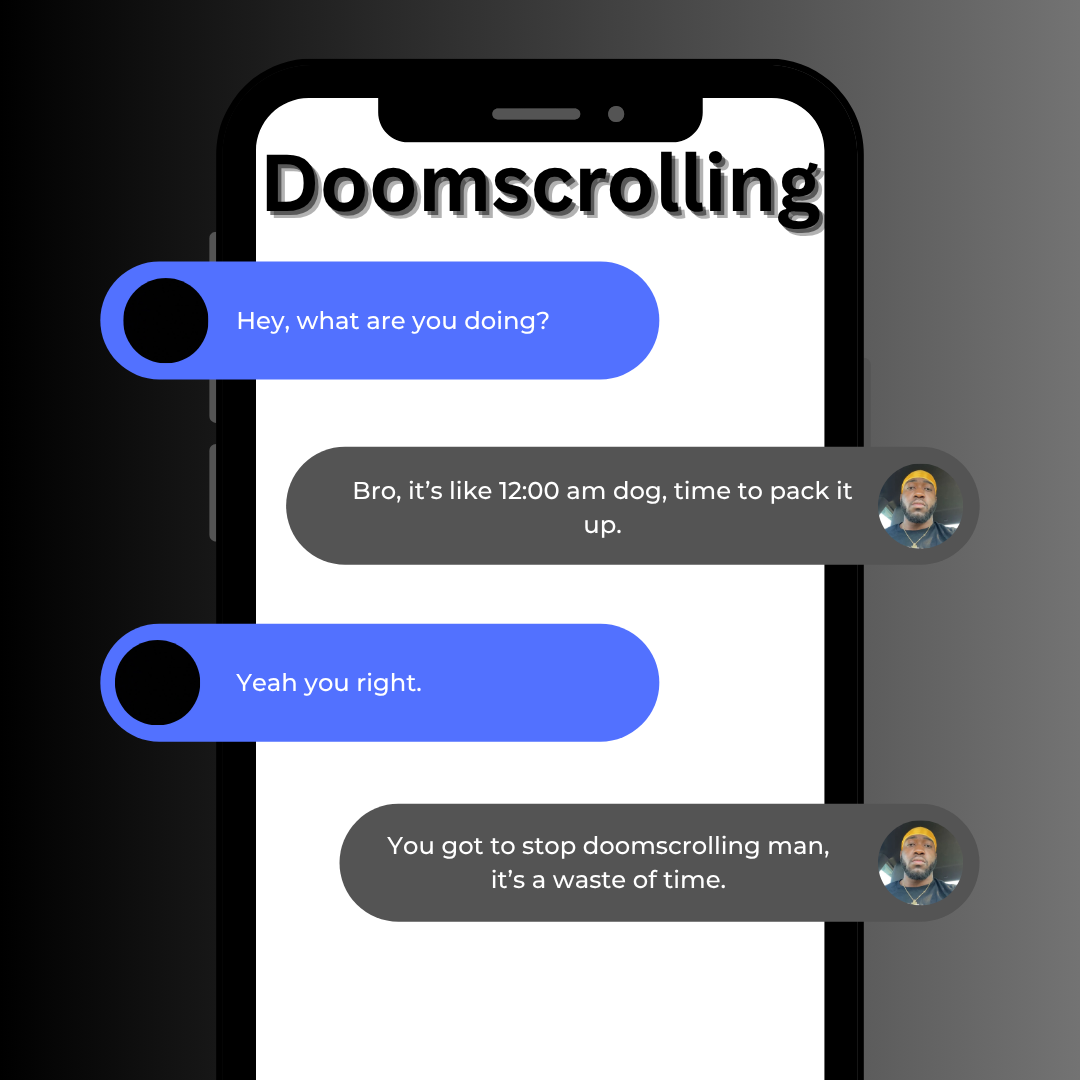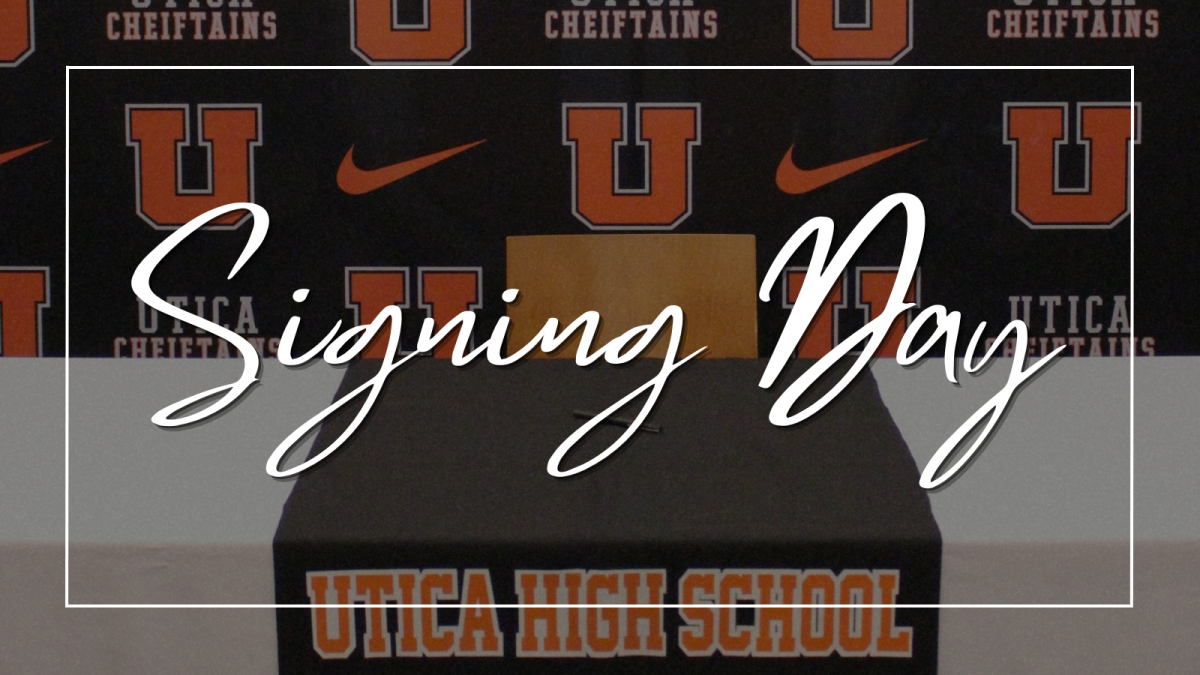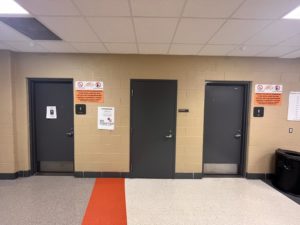Dress code woes
My outrage with the district’s dress code just may create change
November 26, 2019
“Cover up,” the woman at the front desk told me. “You know you’re not supposed to wear crop tops to school.”
Even though I had been dress coded at least 17 times previously–during my junior year alone–I was a little surprised by this. Wearing my AC/DC concert tee tied at my waist with a pair of jeans, I didn’t expect to hear anything that day. In disbelief, I told her I would grab my hoodie from my locker on the way to class, and headed out the door.
It wasn’t even three minutes later when I passed an administrator in the hallway–while I was on my way to my locker–when I was told, “That’s not appropriate; you need to put a hoodie on.” As humiliating and embarrassing as that was, it got even worse when I was escorted to my locker, which was only a few steps away at this point, just to make sure I actually put on my hoodie.
That whole day I noticed so many other dress code violations. Administrators seemed to pick and choose who to embarrass, calling out students in the hall who simply just want to wear what they please–but get told to “cover up.”
I went home very upset, thinking about how selective the dress code is. I talked to my parents, who are teachers, and asked how they felt about the dress code. They both said they believe it’s unfair to tell a kid what is appropriate and not, and even went as far to say that the current dress code could be a form of child grooming and should not be tolerated.
From a young age I have gotten inappropriate comments from adults asking if what I was wearing was appropriate for my age. Once I was asked by a teacher, “Does your father know you left the house looking like that?” I was simply wearing a shirt that showed less than an inch of midriff. All other requirements were met. Comments like this are both embarrassing and degrading to a person’s self image, especially at such a young age.
Having a dress code made me wonder who created it. Who in the district has the right to tell me I can or can not dress in a specific way for seven hours a day, five days a week for 12 years of my life? School is already a requirement, so why should we be treated like school is our “job,” and have restrictions on what to wear?
The school dress code says “low-cut tops, tank tops and sleeveless tops are not allowed,” but then goes on to say, “Outerwear, such as coats and hats, is not to be worn in school.” Some classrooms are kept at such a cold temperatures during the winter season, and when it gets hot outside, they don’t have working air conditioning in many classes. When they do, the teachers can’t control the thermostat for a comfortable temperature. The district says we can’t wear coats or expose our shoulders, but the school is either freezing or extremely hot. Most students layer if they know they have a cold and a hot class, but we are being told to not have a coat or show our shoulders when we are just trying to stay warm or not overheat.
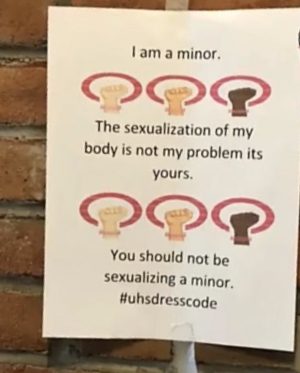
This is one of several posters I attempted to post at school. (My apologies for incorrect usage of “it’s.” Those things can get past me when I’m too focused on my message.)
After all of this, I’d had enough. I was done hearing degrading comments, done watching school officials randomly decide who would be dress coded, and done letting others dictate what was appropriate to wear to school.
I decided to take matters into my own hands and actually do something meaningful to try and get the dress code changed. I made posters at home, and started hanging them up around the school the next day.
About 15 minutes into my walk around the hallways, an administrator stopped me and said he had been looking for me. He pulled out his walkie talkie and said, “I got her.”
There was a thirty second pause, where we just looked at each other awkwardly.
I was terrified. Even though I knew I was doing the right thing by standing up for what I believe in, I honestly don’t like attention, nor the prospect of getting into trouble.
Breaking the silence in the hallway, a voice on the other side of the walkie talkie said, “Bring her to my office.” I recognized that voice; it was our principal, Tom Lietz.
My heart was racing, and I had to keep reminding myself about why I was doing this, and what I was standing up for. After walking through the halls on the first floor, we finally made it to the main office. Taking a few more short steps, I paused and took a deep breath before walking into Mr. Lietz’s office.
This was it. I walked in and took a seat opposite my principal, and it hit me all at once that if administration didn’t see how unfair the dress code really was, I could be in big trouble for hanging up those posters.
The first thing out of Mr. Lietz’s mouth was, “You have my attention; how are we going to make a change?”
I was taken aback for a second and had no idea what to say. This was not the way I was expecting this to go down. At all.
I made my case. I pointed out aspects of the dress code that were unfair and outdated, and he surprised me, again, by nodding his head and actually listening to me. He actually seemed to understand what I had to say.
Still, he was my administrator, and he informed me about all of the school violations I broke by putting up posters, and cutting class to do it. He told me I could be in big trouble. (Did he say “could”?) There was another slight pause before he added, “I see potential in you and what you’re doing.”
Before that school year ended, we had two other meetings. In the first meeting, Mr. Lietz and I talked about why I personally feel so offended by the dress code. I explained how I saw the unfairness as a student, and got to experience it first hand. He listened to my perspective, and it was nice to be understood. We talked about how it would be beneficial to all if we updated the dress code, and we started to form a plan of action on how to make the change.
The second meeting was more about how are we going to go about this. How am I–Wilhelmina Viviano, high school senior–going to get the attention and respect of any “higher ups” in our district? I need them to take me seriously, so I can help make these much-needed changes for all students.
I did my research. I gathered recently updated dress codes, and read several articles about how kids like me went out of their way to make a change. Outdated dress codes was such a common problem around the world; it wasn’t just in Utica Community Schools. I just don’t understand why a set of rules about clothing have not changed, while the times have.
I recently met with Mr. Lietz, with a folder in my hand filled with articles, a copy of our current dress code, examples of updated dress codes from other school districts, and notes on how I felt about them. We had a great conversation about which rules we believed were fair, and put together an argument.
Of course, we had our first snow day when our meeting was planned with the administrators from the board office–the ones who have the power to make changes in district rules. Mr. Lietz rescheduled it, and a date was set.
On Dec. 2, Mr. Lietz and I will meet, as a team, with the Chief of Staff and the Executive Administrator of Secondary Schools. I’m nervous, but I know how important this is. I’m still in disbelief that, following my knee-jerk reaction to hang posters around the school, Mr. Lietz has given me the opportunity to take something old and outdated and make it relevant to today’s world.




